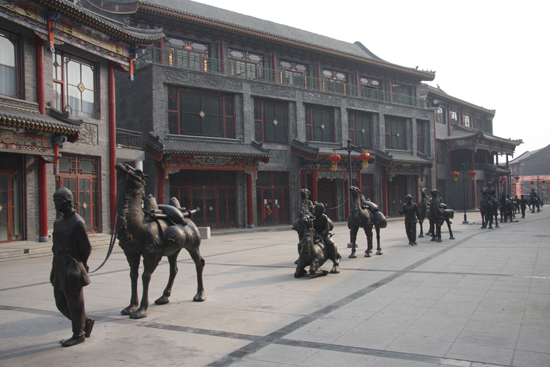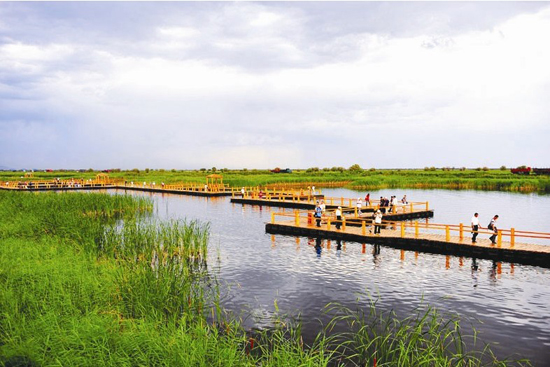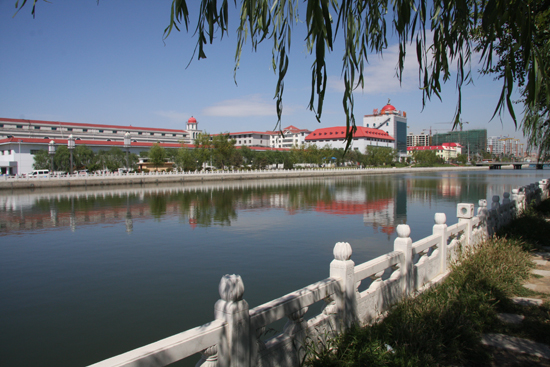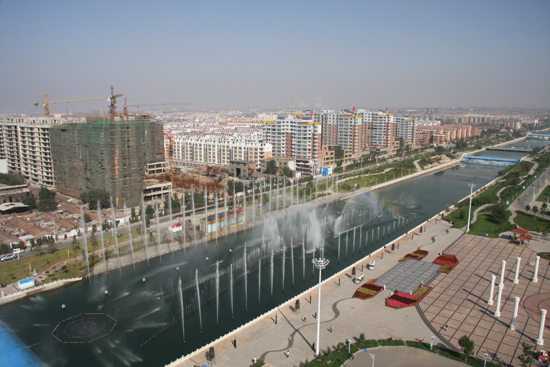Donghe district
Donghe district is the birthplace of the famed Jin (Shanxi) merchants and has a history of around 300 years.
Covering an area of 470 square kilometers, this historical and cultural district boasts many scenic spots, including Tai’an Inn, the former residence of the revolutionary martyr Wang Ruofei and the Beiliang religious culture cluster, the only one of its kind in China. The religious culture cluster is composed of five dominant religious sects (Islam, Christianity, Chinese Buddhism, Lamaism and Catholicism) and covers an area of 0.53 sq km.
 |
| Donghe district [Photo provided to chinadaily.com.cn] |
 |
| Donghe district [Photo provided to chinadaily.com.cn] |
 |
| Nanhai Wetland Scenic Area in Baotou district [Photo provided to chinadaily.com.cn] |
The district is also home to the 200-year-old Miaofa Temple and the national 4A-level Nanhai Wetland Scenic Area, which has been nicknamed “the West Lake beyond the Great Wall.”
The district is home to a population of 516,000 and authorities have taken numerous measures to develop its aluminum industry. Such efforts include supporting self-owned power plant projects carried out by Baotou Aluminum Group, promoting the comprehensive technical transformation of electrolytic aluminum, and spearheading the 3-million-ton aluminum hydroxide project by East Hope Company.
 |
| Donghe district [Photo provided to chinadaily.com.cn] |
 |
| Donghe district [Photo provided to chinadaily.com.cn] |
The projects have helped to accelerate the transformation of the district’s aluminum industry, making it an important industrial base for the production of coal-powered aluminum and aluminum deep-processing.
Donghe district is also home to the largest logistical distribution center and processing center of nonferrous metal, sugar production and wool manufacturing in Baotou.
